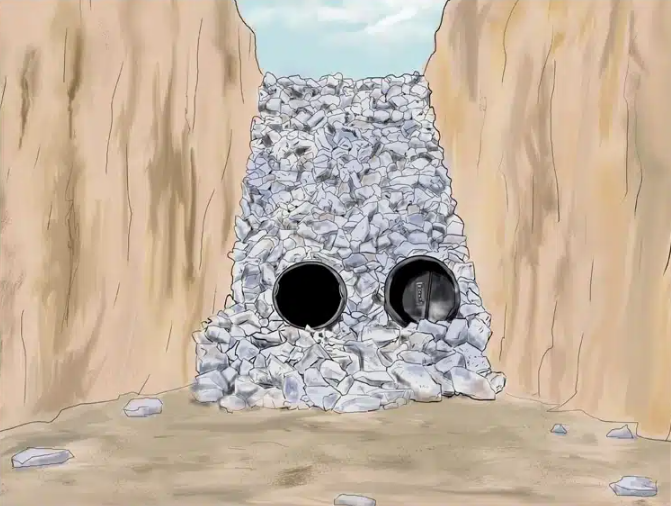Drain Tile vs French Drain: Understanding the Differences Before You Dig

Water is a home’s silent enemy. Whether it’s creeping into the basement or pooling around the foundation, poor drainage is often the culprit behind mold, structural damage, and costly repairs. To fix or prevent these issues, homeowners often consider two popular solutions: drain tile systems and French drains.
Although these terms are sometimes used interchangeably, they serve distinct purposes and are installed in different ways. If you’re planning a drainage upgrade or trying to fix a wet basement, understanding the differences between drain tile vs French drain can help you make the best decision for your home.
What Is a Drain Tile System?
Despite the name, drain tile doesn’t involve actual tiles. It refers to a network of perforated pipes—usually made of PVC or flexible plastic—that are installed around the perimeter of a home’s foundation or under a basement floor. These pipes collect and redirect groundwater away from the structure, keeping basements dry and reducing hydrostatic pressure against foundation walls.
There are two main types:
-
Interior Drain Tile Systems: Installed beneath the basement floor along the perimeter. Often used in waterproofing solutions when water is seeping through the basement walls or floor.
-
Exterior Drain Tile Systems: Installed around the outside of the foundation at the footing level. These require excavation and are usually combined with waterproof membranes for added protection.
Purpose: Drain tile systems are primarily designed to protect a home’s foundation and basement from water infiltration.
What Is a French Drain?
A French drain is a trench filled with gravel or rock that contains a perforated pipe designed to redirect surface water and shallow subsurface water away from specific areas. The trench is sloped to ensure gravity directs water flow to a safe discharge point.
French drains are often used in:
-
Yards with poor surface drainage
-
Driveways and retaining walls
-
Areas where water pools during heavy rain
-
Diverting water away from foundations before it becomes a basement issue
Purpose: French drains are more versatile and are commonly used for surface water management in landscapes, lawns, or hardscapes.
Drain Tile vs French Drain: Key Differences
| Feature | Drain Tile System | French Drain |
|---|---|---|
| Location | Around or under the foundation | In the yard, landscape, or hardscape |
| Depth | Deeper – below foundation or slab | Shallower – just below the surface |
| Purpose | Prevent basement leaks, relieve pressure | Redirect surface water |
| Installation | Requires excavation (especially exterior) | Less invasive, smaller trench |
| Use Case | Wet basements, foundation protection | Yard flooding, soggy areas |
| Complexity | More technical, may involve sump pumps | Simple gravity-fed design |
Which One Do You Need?
The answer depends on where your water problem originates:
-
If you have a wet basement, visible leaks, or signs of foundation water pressure (like wall cracks or efflorescence), a drain tile system—particularly an interior one—is likely the right choice. It’s a long-term fix that addresses water at the foundation level.
-
If your lawn turns into a swamp after every rain, or water is visibly pooling near patios, driveways, or low spots, a French drain may be the ideal solution. It’s faster and more affordable for surface-level issues.
In some cases, both systems are used together for maximum protection. For example, a French drain could manage runoff in the yard, while a drain tile system prevents it from reaching the foundation.
Installation Considerations
No matter which system you choose, proper installation is key. Common mistakes—like incorrect pipe slope, poor backfilling, or lack of fabric filters—can lead to system failure.
Here are a few tips:
-
Always install a proper slope (at least 1% grade) to keep water moving.
-
Use landscape fabric or filter wrap around the pipe and gravel to prevent clogs.
-
Consider a sump pump if your drain tile doesn’t naturally slope to a safe discharge area.
-
Hire a qualified contractor with experience in waterproofing and drainage systems.
Professional Help Makes a Difference
While DIY French drains are possible for surface issues, foundation-level drainage (like drain tile systems) should be left to professionals—especially when basement waterproofing or structural integrity is involved.
Companies specializing in foundation repair and basement waterproofing often evaluate water issues holistically. They can determine whether you need a French drain, a drain tile system, or a combination—and install it correctly the first time.
Final Thoughts
When comparing drain tile vs French drain, the key difference lies in their purpose. Drain tile systems protect your home’s foundation and interior, while French drains manage surface water and prevent it from ever becoming a structural threat.
If you’re unsure which solution is right for you, consider reaching out to a trusted local foundation or drainage specialist. Whether it’s stopping basement leaks or drying out your yard, the right drainage solution can save you from much bigger problems down the line.











